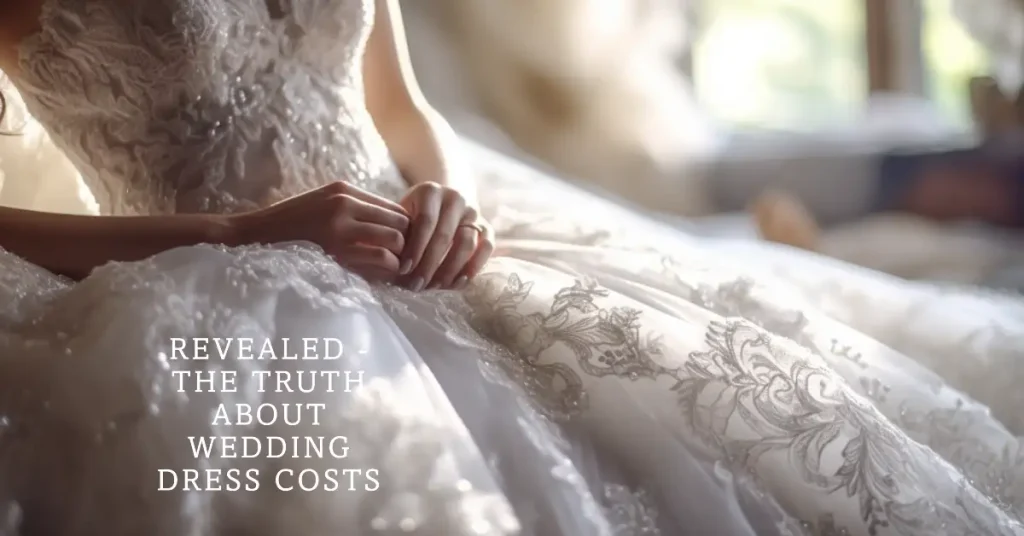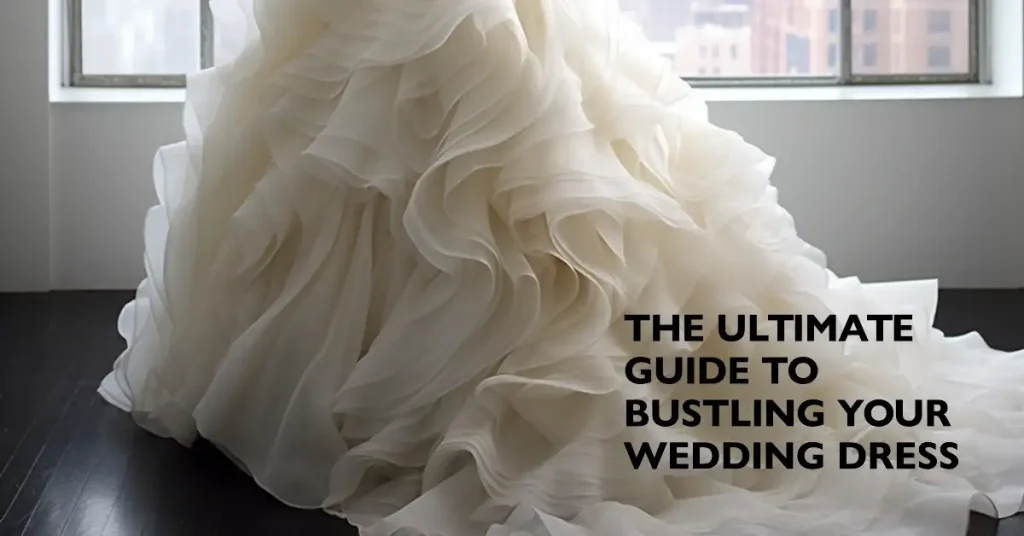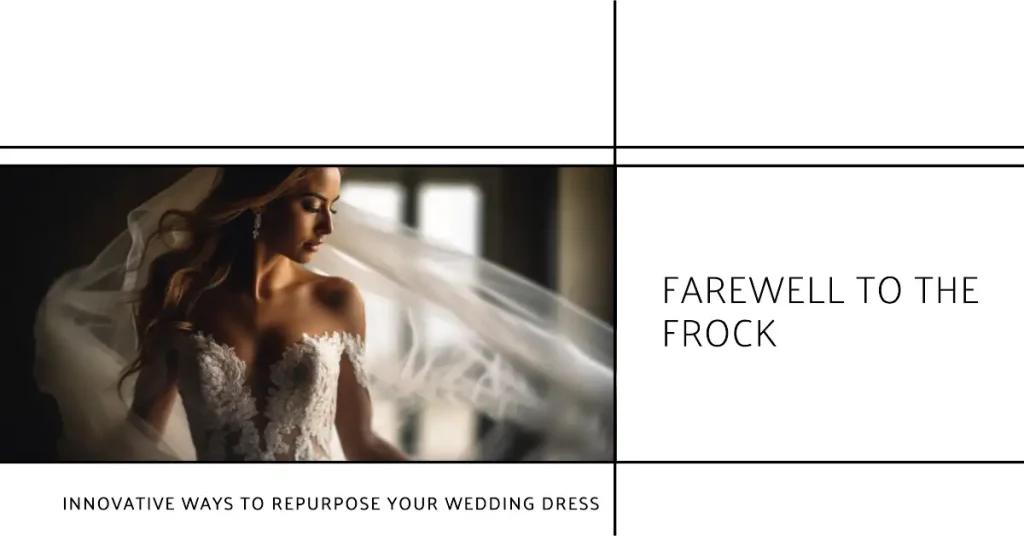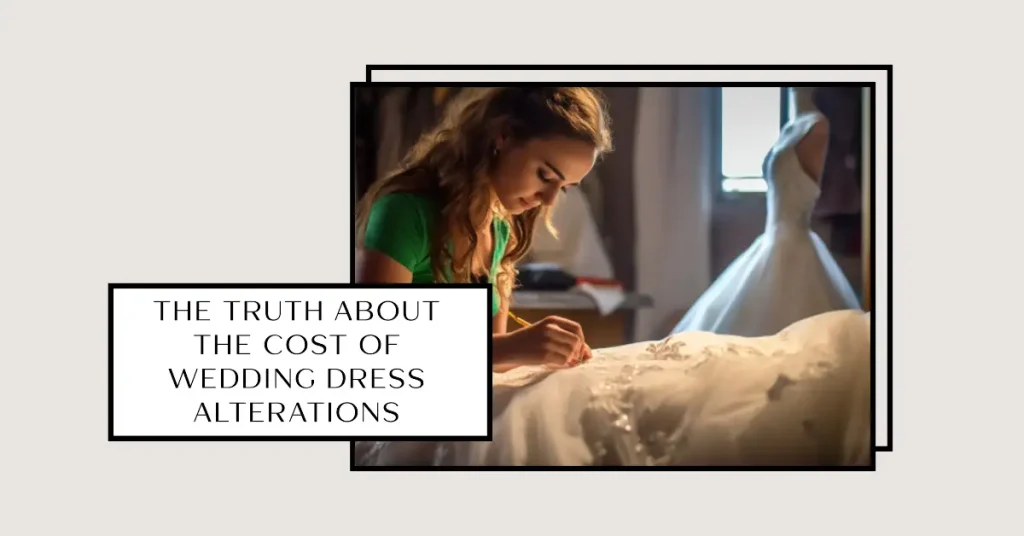Table of Contents
To measure for a wedding dress, you’ll need to take three key measurements: bust, waist, and hip size. Use a soft tape measure and measure the bust at the fullest part, the waist at the narrowest part, and the hips at the widest part. It’s best to measure while wearing the undergarments and shoes you plan to wear on the day for the most accurate fit. Always follow the specific designer’s measurement guide, as sizing can vary between different brands.
We’ll discuss this topic in more detail in the paragraphs below…
Every bride wants to look and feel her best on her wedding day, and choosing the right wedding dress is a crucial part of that. One of the most important steps in finding the perfect wedding dress is taking accurate measurements. A well-fitted dress not only provides comfort but also enhances the bride’s natural beauty, making her feel confident and beautiful on her special day.
- Carter, Lisa (Author)
- English (Publication Language)
- 107 Pages - 04/06/2024 (Publication Date) - Independently published (Publisher)
In this article, we’ll cover everything you need to know about measuring for a wedding dress, including why accurate measurements matter, how to take your measurements, and tips for adjusting for different styles. Whether you’re buying a dress online or at a bridal salon, these tips will help you find the perfect fit and look your best on your big day.
Why Accurate Measurements Matter
Getting accurate measurements is critical when selecting a wedding dress. The perfect fit is key to ensuring that the bride feels confident and comfortable on her big day. It is important to understand that bridal gown sizing is not the same as regular clothing sizes and can vary between designers.
Measuring for a wedding dress can be a daunting task, but it is essential for finding the perfect fit. By taking accurate measurements, the bride can avoid the disappointment of a dress that is too small or too large. Additionally, an ill-fitting dress can cause discomfort and distract from the bride’s special day.
When measuring for a wedding dress, it is important to follow a wedding dress fitting guide to ensure that the correct areas are measured. This will include measuring the bust, waist, hips, and length of the dress. Measurements should be taken with the undergarments and shoes that will be worn on the wedding day, as this will affect the fit of the dress.
“The perfect fit is key to ensuring that the bride feels confident and comfortable on her big day.”
Many bridal salons provide a wedding dress measurement chart to help brides take accurate measurements. It is always recommended to seek professional help if the bride is unsure of her measurements or if the dress has a complex style.
Overall, taking accurate measurements for a wedding dress is essential for achieving the perfect fit. By following proper measuring techniques and seeking professional help when necessary, the bride can confidently find the dress of her dreams.

Taking Your Measurements
Before measuring for a wedding dress, it’s important to wear the undergarments and shoes you plan to wear on your big day. This will ensure accuracy in the measuring process.
To start, stand up straight with your arms resting comfortably at your sides. Have someone else take the measurements if possible, to ensure precise results.
| Measurement | How to measure |
|---|---|
| Bust | Wrap the measuring tape around the fullest part of your chest, making sure it’s snug but not too tight. Keep the tape parallel to the ground. |
| Waist | Find your natural waistline by bending to one side and noting where your body creases. Wrap the measuring tape around this area, keeping it parallel to the ground. |
| Hips | Measure around the widest part of your hips, keeping the tape parallel to the ground. Make sure the tape is snug but not too tight. |
| Length | For the length, measure from the top of your shoulder down to where you want the hem to fall, taking into account the height of your shoes. If you’re having a train, measure from the top of your shoulder to the end of the train. |
- MULTIPLE USES: Body fat measurement tape, waist measuring ruler, body wraps weight loss for women and men, sewing ruler, virtual bra fittings, kids tape measure, fabric measuring tape, shoes, dress, baby, woodworking, wardrobe, gym, rope, chin, chest, arm, bodybuilding, dog and puppy, smart measure tape, mm ruler, clothing measuring tape, body measuring tape weight loss
- Measuring Range: 60 inches/ 150cm; 0-60 in and 0-150cm. Has Centimetre Scale on Reverse Side, accurately printed in both inches and centimeters, you can measure according to your requirements, You can keep a soft tape measure in your purse, you never know when you have to measure something
- GREAT MATERIAL: Tailor vinyl fabric tape measure won’t stretch or deform, gives accurate measurement consistency, waist measuring tape, a flexible and portable body tape measure, made from soft plastic material
It’s important to note that these are just the basic measurements for a wedding dress. Depending on the style of dress, you may need additional measurements, such as shoulder width, arm circumference, or thigh width. Be sure to consult with a professional if you’re unsure.
Bust Measurement
Measuring the bust area is an essential part of getting accurate measurements for a wedding dress. To measure your bust, wrap the measuring tape around the fullest part of your bust, making sure it is parallel to the ground. Keep your arms relaxed at your sides and avoid pulling the tape too tight or too loose.
It is crucial to note that your bra size may not necessarily correspond to your bust measurement for a wedding dress. Therefore, it’s best to measure your bust without a bra or with a well-fitted strapless bra.
Once you have obtained your bust measurement, compare it to the sizing chart provided by the dress designer or bridal salon to determine your appropriate dress size. Keep in mind that alterations may be necessary to achieve a perfect fit, but accurate measurements will ensure that alterations are minimal.
Remember that when in doubt, it’s always better to have someone else assist in taking your measurements to ensure accuracy.
Waist Measurement
The waist measurement is another crucial factor when measuring for a wedding dress. This measurement is taken at the narrowest point of the waist, typically above the belly button. For an accurate measurement, the bride should stand up straight with a relaxed stomach and exhale before taking the measurement.
Make sure the tape measure is level and snug around the waist, but not too tight that it digs into the skin or creates indentations in the flesh. The tape measure should be parallel to the ground and not slanted at an angle.
It is important to note that the natural waistline may not always match the waistline of the chosen wedding dress style. Therefore, it is essential to measure the waistline of the specific dress that the bride intends to wear on her special day.
Hip Measurement
Measuring the hips accurately is crucial to achieving the perfect fit for a wedding dress. To get the right measurement, the bride should stand with her feet together and wrap the measuring tape around the widest part of her hips and buttocks, making sure the tape is parallel to the floor.
It’s important not to pull the measuring tape too tight or too loose, as this can result in an incorrect measurement. The tape should be snug against the skin without causing any indentation or compression of the flesh. The bride should also ensure that the tape is level all the way around her hips.
Length Measurement
Measuring the length of the wedding dress is crucial to ensure that it fits perfectly with the bride’s shoes and desired style. To measure the length accurately, the bride should stand upright with her back straight, heels together, and measure from the hollow at the base of her neck to the floor with the tape measure in a straight line.
If the bride plans to wear heels, she should also measure with the shoes on to ensure the dress falls at the desired length. Additionally, it’s essential to consider the style of the dress – for example, an A-line dress may require a different length measurement than a ball gown.
Remember to take into account any other factors that may impact the dress’s length, such as the venue or whether the bride will be walking on grass or a hard surface. By taking these factors into account and measuring accurately, the bride can be sure that her dress will fit perfectly on her big day.
Additional Measurements
Aside from the bust, waist, and hip measurements, there are other areas of the body that may require consideration when fitting a wedding dress. This section will outline some additional measurements that may be necessary to ensure the perfect fit for your bridal gown.
Shoulder Width
Measuring the shoulder width is important for dresses with straps or sleeves. To measure, start at the base of the neck where the shoulder meets and measure straight across to the same point on the opposite shoulder.
Arm Circumference
For dresses with fitted sleeves, measuring the arm circumference is essential. To measure, wrap the measuring tape around the fullest part of the upper arm, making sure to keep the tape parallel to the ground.
Remember to measure both arms, as they may not be the same size.
How to Adjust for Different Styles
When it comes to measuring for a wedding dress, different styles may require some adjustments to ensure the perfect fit. Here are some tips for measuring for specific styles:
A-Line Dresses
For A-line dresses, the focus should be on the bust and waist measurements. Take the bust measurement at its fullest point and the waist measurement at its narrowest point. Avoid taking the hip measurement into account as A-line dresses are designed to fit loosely around the hips.
Mermaid Dresses
When measuring for a mermaid dress, the bust, waist, and hip measurements are all important. Take the bust measurement at its fullest point, the waist measurement at its narrowest point, and the hip measurement at its fullest point. Keep in mind that mermaid dresses are designed to fit tightly around the body and flare out below the knee.

Ball Gown Dresses
For ball gown dresses, the focus should be on the bust and waist measurements. Take the bust measurement at its fullest point and the waist measurement at its narrowest point. Keep in mind that ball gown dresses are designed to fit tightly around the waist and flare out into a full skirt.
Remember, if you are unsure about how to measure for a specific style, it is always a good idea to seek professional help from a bridal salon or tailor.
Seeking Professional Help
While measuring for a wedding dress can be done at home, seeking professional help can ensure that the measurements are accurate and that the dress fits perfectly on the big day. This is particularly important for complex styles or if the bride is unsure of her own measurements.
For those who wish to seek professional help, it is recommended to visit a reputable bridal salon or tailor with experience in wedding dress fittings. They will have the tools and expertise to measure accurately and help the bride find the perfect fit for her dream dress.
It is important to schedule a fitting appointment well in advance of the wedding date to allow time for alterations if needed. During this appointment, the bride can work with the fitter to ensure that the dress fits perfectly in all the right places and make any necessary adjustments.
Ultimately, seeking professional help for measuring and fitting a wedding dress can provide peace of mind and ensure that the bride feels confident and beautiful on her special day.
Tips for Trying on Wedding Dresses
Once you have taken accurate measurements for your wedding dress, it’s time to start trying on different styles. Here are some tips to keep in mind during the process:
- Bring the right undergarments and shoes: Wear the undergarments and shoes you plan to wear on your wedding day to get the most accurate sense of how the dress will fit.
- Start with your preferred style: If you know you want a certain style of dress, such as a ball gown or mermaid style, start with those dresses first to see how they look and feel.
- Be open to trying on different styles: Even if you have a preferred style in mind, be open to trying on different types of dresses to see what looks and feels best on you.
- Don’t be afraid to move around: When trying on dresses, move around as much as possible to get a sense of how the dress will feel on the wedding day.
- Take pictures: Take pictures of yourself in each dress from different angles to help you remember which ones you liked the most.
- Low back ideal for wear with strapless gowns and dresses
- Soft-banded, cotton lined underwires support comfortably
- Slims your curves to create the perfect, clean silhouette
Once you have chosen your dress, be sure to communicate any necessary alterations to the bridal salon or tailor. And remember, don’t be afraid to ask for their professional opinion or advice if you’re unsure about any aspect of the fitting or alteration process.
Conclusion
Accurately measuring for a wedding dress is essential for any bride who wants to look and feel her best on her big day. By following the steps outlined in this guide, brides can ensure that their wedding dress fits beautifully and is comfortable to wear throughout the day.
Remember that seeking professional help is always an option, especially when dealing with complex dress styles or if the bride is unsure of her own measurements. A reputable bridal salon or tailor can provide invaluable assistance in achieving the perfect fit.
When trying on wedding dresses, keep in mind the tips provided in this guide, and be sure to communicate any concerns or requests with your dress fitter or tailor. With a little patience and perseverance, every bride can find the wedding dress of her dreams and feel confident and beautiful on her special day.
COPYRIGHT NOTICE
Please be advised that all images, designs, and creative content on this page are the exclusive property of TheIDoGuide.com and are protected under international copyright laws. The images may not be reproduced, copied, transmitted or manipulated without the written permission of TheIDoGuide.com.
Unauthorized use, distribution, display, or creation of derivative works of any images contained on this site, is strictly prohibited and can lead to legal penalties. We actively monitor for, and enforce, our copyright interests.
If you wish to use any of our images, kindly contact us to seek permission. Respect of copyright is not merely a legal requirement but also an acknowledgement and support of the hard work and creativity that goes into producing them.
Thank you for your understanding and cooperation.
© 2023, TheIDoGuide.com. All Rights Reserved.








